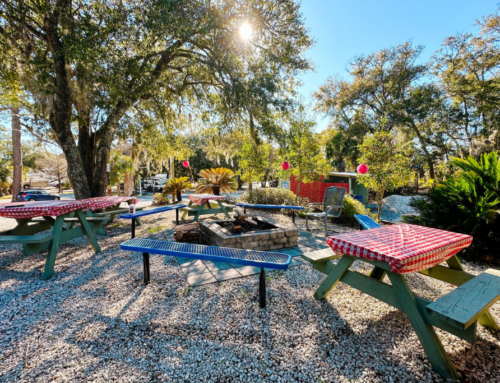GoCampingAmerica.com | Posted May 18th,
2021
RVing
101: Amp Up Your Knowledge of Your RV’s Electrical Needs
Happy Camper Blog
If you are new
to RVing, there a few things you need to know about your rig’s electrical
needs that will make your life on the road a whole lot
easier.
First of all, you need to determine if your RV has a 30-amp or
50-amp electrical system, and there’s a really easy way to do this. If the
large plug on your RV’s power cord has three prongs, that means you’re
equipped for 30-amp service. If your plug has four prongs, you have 50-amp
service. This power plug is how you will connect to your campsite’s power
source, which is called a pedestal.
If you have 50-amp service, that means you can run many items,
such as your A/C units and appliances, at one time. With 30-amp service,
you’ll need to more careful, and only run items as you need them. Otherwise,
you’ll risk tripping the breaker, just as you would at home if you overloaded
a circuit. Keep in mind that items that generate heat, such as a furnace,
microwave or hair dryer, and those that generate cool air, such as your air
conditioning unit and refrigerator, will draw more power than other items
like televisions or phone chargers.
Many campground pedestals offer both 30-amp and 50-amp service. In
fact, the National Electric Code requires that if a pedestal contains a
50-amp receptacle, it must also contain one for 30-amp service. The bottom
line is that it’s important to find and book a campsite that has the correct
amperage for your RV’s requirements.
Safety First
To eliminate the possibility of being shocked or incurring damage
to your RV due to an incorrectly wired pedestal, it’s wise to purchase a device
called a polarity tester so you can determine if the pedestal has any wiring
problems before you connect your rig. (If it does, you should ask the
campground manager to move you to another site.) Many RVs come from the
factory with an electrical management system (EMS) pre-installed that can
also help protect your RV from power surges and low-voltage
situations.
Here’s another important safety tip: DO NOT be tempted to plug
your RV into an outlet designed for a clothes dryer, even though the outlet
may look the same as those on an RV pedestal. Clothes dryers run on 240 volts
whereas RVs outlets run on 120 volts. Connecting an RV to a clothes dryer
outlet can burn out the rig’s electrical system.
A Word about Extension
Cords
If you find yourself needing an extension cord, DO NOT use the
type of extension cord you would use at home or you could risk starting a
fire. There are special extension cords designed specifically for RVs. Make
sure you only use this type.
Finally, after testing your campsite’s pedestal to make sure it’s
wired correctly, it’s a good idea power down or unplug everything inside your
rig before connecting it to your power source.
Now that you have the basics of RV electrical needs down, it’s
time to go to GoCampingAmerica.com to
find your next camping adventure!





